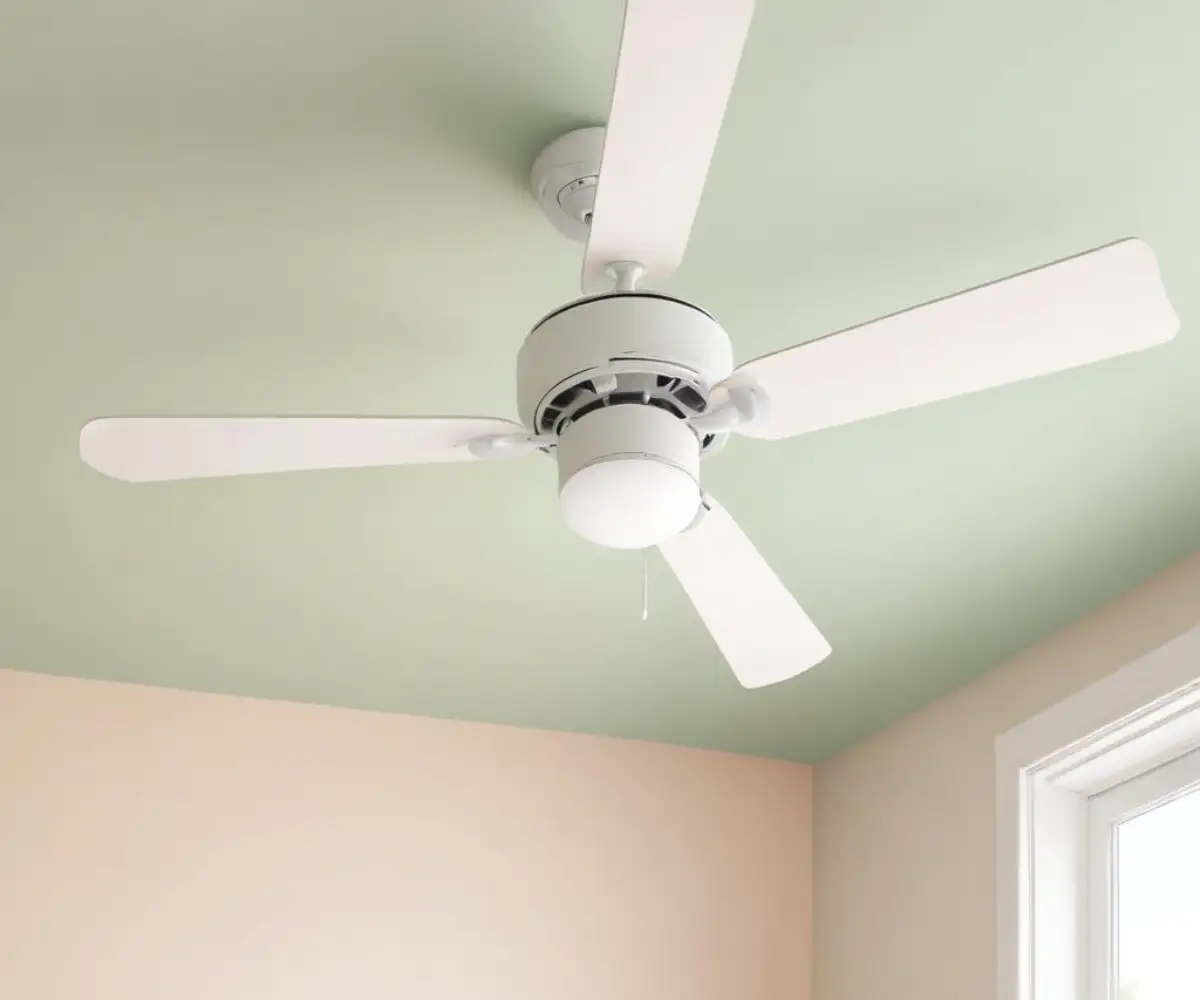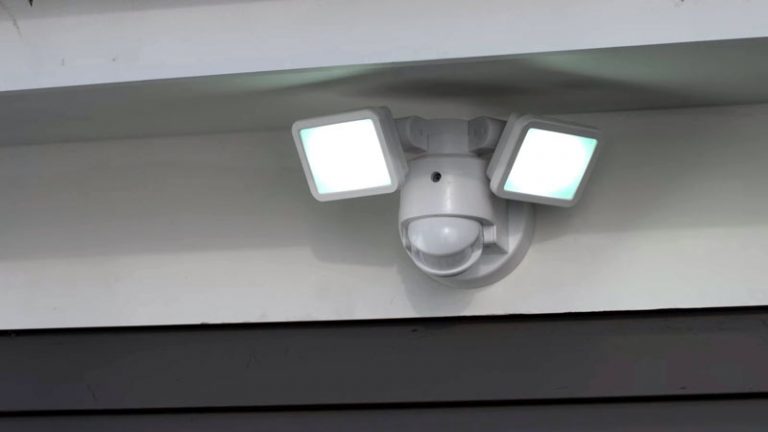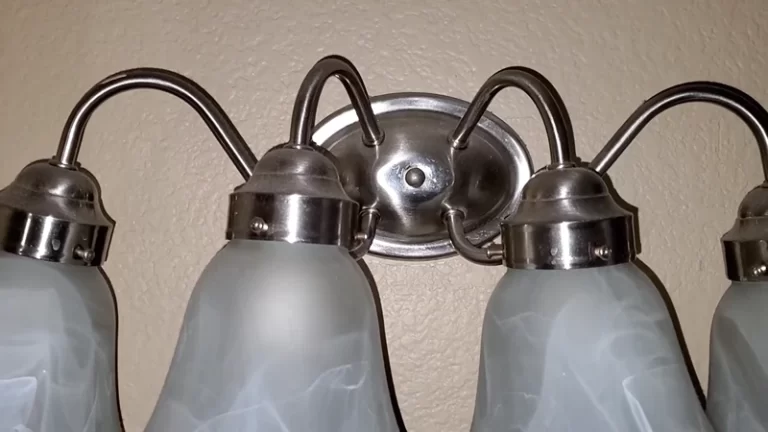Hunter Dempsey Light Flickers? Your Ultimate 10-Minute Fix Guide
There’s nothing more distracting than a randomly flickering light. When it’s coming from your Hunter Dempsey ceiling fan, a fixture designed for comfort and ambiance, it can be especially frustrating. You’re not alone in this; a flickering light is one of the most common issues homeowners face with ceiling fans.
This guide will walk you through the causes and provide clear, step-by-step solutions to banish that annoying flicker for good. From simple checks you can do in seconds to more detailed troubleshooting, we have the answers you need to restore peace and steady light to your room.
You'll Learn About
Why Your Hunter Dempsey Fan Light Is Flickering: Identifying the Culprits
A flickering ceiling fan light is more than just an annoyance; it’s a symptom of an underlying issue. For the Hunter Dempsey model, this problem usually traces back to a few common culprits. Understanding these potential causes is the first step toward a successful and lasting repair.
Before you start any work, remember the golden rule of electrical safety: always turn off the power at the circuit breaker. This simple action prevents the risk of electrical shock and ensures you can work on your fan safely.
The Simplest Fix: Check Your Light Bulbs
The most frequent cause of flickering is often the most overlooked: the light bulbs themselves. The constant, subtle vibrations from a running fan can cause bulbs to loosen in their sockets over time. An improperly seated bulb will have an inconsistent connection to power, resulting in a flicker.
Another common issue is bulb compatibility. The Hunter Dempsey is an LED fan, and using the wrong type of bulb, such as a non-dimmable bulb with a dimming feature, can cause erratic behavior. Ensure your bulbs are specifically marked as “dimmable” if you intend to use that feature.
The Dimmer Switch Dilemma
Many homeowners install their ceiling fans on a circuit that includes a wall dimmer switch, which is a primary cause of flickering lights. The Hunter Dempsey fan is designed to be controlled by its own remote, which has built-in dimming capabilities. An external wall dimmer sends a reduced or fluctuating electrical signal that conflicts with the fan’s internal receiver.
This incompatibility between the external dimmer and the fan’s internal electronics is a notorious source of flickering. The fan’s receiver expects a full, steady voltage to operate correctly. When it receives a chopped or modified signal from a wall dimmer, it can’t regulate power to the light kit properly.
Loose Wiring Connections: A Hidden Danger
Over time, the vibrations from the fan’s motor can also loosen the wire connections within the fan’s housing or the electrical box in the ceiling. A loose wire nut can create an intermittent connection, causing the light to flicker as the connection is made and broken.
These loose connections are not just a nuisance; they can be a fire hazard. An unstable electrical connection can create sparks or arcs, which can ignite surrounding materials. This makes checking your wiring a critical safety step, not just a troubleshooting measure.
The Faulty LED Driver or Light Kit
Inside your Hunter Dempsey fan is an LED driver, which is a small electronic component that regulates the power going to the LED lights. Like any electronic part, this driver can fail over time. When it begins to malfunction, it can send an inconsistent current to the LEDs, resulting in a strobe-like flicker.
In some cases, the entire light kit assembly could be defective. While less common, a fault within the kit’s internal wiring or sockets can also lead to flickering issues. If you’ve exhausted all other possibilities, the LED driver or light kit itself may be the root of the problem.
Step-by-Step Guide to Stop the Flicker for Good
Now that you understand the potential causes, it’s time to take action. Follow these systematic steps to diagnose and resolve the flickering issue with your Hunter Dempsey fan. Remember to keep the power off at the circuit breaker throughout this process.
Step 1: The Bulb Check and Replacement
Start with the easiest fix. With the power off, carefully remove the glass globe from the light kit. Gently twist each light bulb to ensure it is screwed in tightly and securely seated in its socket.
If the bulbs are tight, check their specifications. Make sure they are dimmable LEDs and that their wattage does not exceed the maximum rating for the fan (typically 14 watts for the Dempsey model). If you’re unsure, try swapping in a new set of compatible bulbs to see if the issue resolves.
Step 2: Taming the Dimmer Switch
If you have a wall dimmer switch controlling your fan, it’s the most likely culprit. The solution is to remove it from the equation. Replace the dimmer switch with a standard on/off toggle switch.
This ensures the fan’s remote receiver gets the full, uninterrupted voltage it needs to function correctly. You can still dim the lights using the fan’s included remote control. If you’re not comfortable replacing a wall switch, it’s a quick and inexpensive job for a qualified electrician.
Step 3: Securing All Wiring (Safety First!)
If the flicker persists, it’s time to inspect the wiring. After confirming the power is off, carefully lower the fan’s canopy from the ceiling to expose the wiring in the junction box. Check that all wire nuts are twisted on tightly and that no bare wires are exposed.
Next, check the connections within the fan’s switch housing, where the light kit connects to the fan motor. Ensure all plug-in connectors are firmly seated. If you find any loose connections, secure them properly before reassembling the fan.

Step 4: When to Suspect the LED Driver or Receiver
If you’ve checked the bulbs, removed any incompatible dimmers, and secured all wiring, the problem may lie with the fan’s internal components. A faulty remote receiver or LED driver can cause flickering that other solutions can’t fix. Often, these issues appear as a very regular, rhythmic flicker or a situation where the light turns off and on by itself.
At this point, the best course of action is to contact Hunter’s customer support. The Dempsey model is known to have occasional issues with its receiver, and the company is often able to provide a replacement part. Be prepared with your fan’s model number when you call.
Quick Troubleshooting Guide
For a fast reference, use this table to match symptoms to their likely causes and solutions.
| Symptom | Likely Cause | Solution |
|---|---|---|
| Irregular, random flickering | Loose light bulbs or faulty bulbs | Tighten or replace bulbs with correct wattage, dimmable LEDs. |
| Consistent flicker, especially when dimming | Incompatible wall dimmer switch | Replace wall dimmer with a standard on/off switch. |
| Flicker accompanied by fan malfunction | Loose wiring connections | Turn off power and tighten all wire nuts at the ceiling and in the fan housing. |
| Strobe-like, rhythmic flashing | Faulty LED driver or remote receiver | Contact Hunter Fan support for a replacement part. |
Advanced Troubleshooting and When to Call a Pro
Sometimes, the solution isn’t as straightforward as tightening a bulb. A few less common issues can also cause flickering. Before calling for professional help, there are a couple more things you can check yourself.
Resetting Your Hunter Fan Remote and Receiver
Occasionally, the communication between the remote and the fan’s receiver can be disrupted, leading to erratic behavior. Resetting the connection can solve the problem. To do this, turn the power to the fan off at the wall switch or breaker, wait a few seconds, and then turn it back on.
Within three minutes of restoring power, press and hold the “Fan Off” and “High” speed buttons on your remote simultaneously for about four seconds. This will re-pair the remote to the receiver and can clear up any communication glitches that may have caused the flickering.
The Professional’s Touch: When You’ve Tried Everything
If you have worked through all the steps—checked the bulbs, replaced the dimmer, secured the wiring, and reset the remote—and the light still flickers, it’s time to call a licensed electrician. There could be a more complex issue at play, such as a problem with your home’s wiring or an overloaded circuit.
Working with electricity can be dangerous if you’re not experienced. A professional can safely diagnose and fix underlying electrical problems, ensuring your fan works correctly and your home remains safe.
Preventive Maintenance: Keep Your Fan Running Smoothly
Once you’ve fixed the flicker, a little preventive care can keep it from coming back. Regular maintenance is simple and ensures your Hunter Dempsey fan operates reliably for years to come.
Regular Cleaning and Inspection
At least twice a year, take a moment to clean your fan. Dust buildup on the blades can cause wobbling, which in turn can vibrate connections loose. While you’re cleaning, give the light bulbs a gentle twist to ensure they remain snug in their sockets.
A secure installation is fundamental to preventing many fan issues. This is as true for a ceiling fan as it is for outdoor structures. Just as you’d carefully consider whether to use 4×4 vs 4×6 fence posts for the stability of a fence, ensuring your fan’s mounting bracket is secure to the ceiling joist is key to minimizing vibration.
Beyond the Flicker: Understanding Your Fan’s Electronics
To truly master your fan’s performance, it helps to understand what’s happening behind the scenes. The Hunter Dempsey, like most modern fans, relies on a delicate interplay of electronic components that can be sensitive to external factors.
One often-overlooked source of electrical issues is interference from other major appliances on the same circuit. A large appliance starting up, like a refrigerator or air conditioner, can cause a momentary voltage drop that makes sensitive LED lights flicker. This is particularly true if an appliance was installed improperly; for instance, a dishwasher that is too tall might have had its wiring pinched during a forced installation, creating instability on the circuit.
Even factors outside your home can impact electrical stability. Pests can damage external or internal wiring, a problem sometimes inadvertently encouraged by poor landscaping choices. For example, piling mulch against a brick house can attract termites and other pests that may eventually compromise wiring. This highlights how holistic home maintenance is crucial for preventing unexpected electrical issues.
Conclusion: A Clear and Steady Light
A flickering Hunter Dempsey fan light is a fixable problem. By systematically working through the potential causes, from loose bulbs and incompatible dimmers to loose wiring and faulty components, you can identify and solve the issue. Always prioritize safety by turning off the power before you begin.
With a little patience and the right approach, you can eliminate that frustrating flicker and once again enjoy the comfort and steady, reliable illumination your ceiling fan was designed to provide.


